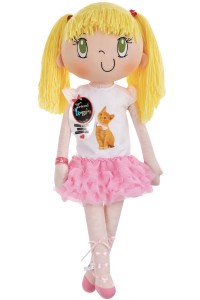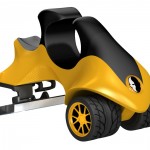 Dolls date back almost to the beginning of civilization, and were often used in magic and religious rituals, and still are today.
Dolls date back almost to the beginning of civilization, and were often used in magic and religious rituals, and still are today.
They also were considered as children’s toys from extremely early times, and throughout history, have varied in size, shape, and style, from simple creations made from wood, to the modern life size dolls for children.
Here are a few highlights of the history of dolls:
- Early records of dolls as children toys appeared in ancient civilization of Egypt, Greece, and Rome.
- Early dolls were traditionally made from such materials as Ivory, Clay, and Wood. Some of these early dolls merely suggested the shape of human, while others were quite elaborate and had features that were identifiable as “human like”.
- Rag dolls have traditionally been made from scraps of cloth, and at one time they were made by families too poor to afford to buy the wooden store bought dolls of the time
- Modern doll making has its roots in 15th century Germany.
- Russian nesting dolls have been a popular toy among Russian children for several hundred years and are still favored today. These dolls are usually hollow in the set, with each doll being slightly smaller than the one before so it can nest inside the larger doll. These dolls are often elaborately painted, and are often sought-after by collectors.
- Early settlers to the United States discovered that the Native Americans would make their children dolls from dried corn husks. The settlers soon adopted this kind of doll as toys for their own children.
- Early American settlers also made their children “Apple Dolls”, so named because their heads were made from dried apples. However, dried apple heads are often viewed as amusing and sometimes scary by modern children.
- It wasn’t until the Industrial Revolution that dolls really came into their own as toys since, unlike individual doll makers who often took weeks and months to complete one doll, factories could turn these toys out by the hundreds. Over time, companies began making dolls that seemed to have more human characteristics, such as being able to eat from a bottle, wet a diaper, and later, even speak a few words and phrases.
- The first dolls for boys were probably wooden or bone soldiers, and later these small replicas increased in stature and gave way to a variety of action figures of various sizes.
- Of all the dolls created, Barbie remains the most popular since her creation in 1959, and the only real challenge to her popularity was the Bratz doll that gained 40% of the market in 2006.
- Today, dolls remain a popular toy and serve to help children learn the rudiments about caring for a “baby”. In early childhood, a doll is often considered a best friend and shares tea parties, playing dress up, and many adventures with their human companion.
- In the growing world of technology, there are even online sites where children can play with and dress up a cyber version of a paper doll via a computer.
- It appears from all evidence that dolls are one of the oldest and more popular toys enjoyed by children in every country on earth.
As the history of dolls shows, these cute toys have been around for centuries and have advanced along with civilisation to become an integral part of society and the most sought-after toy for all occasions.
Enjoyed this article? Share it with others








 Facebook
Facebook Pinterest
Pinterest Twitter
Twitter Google+
Google+